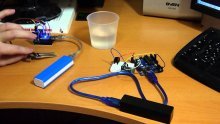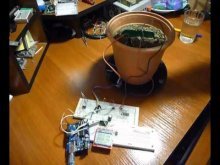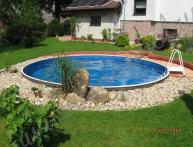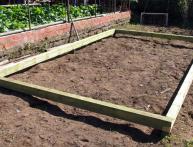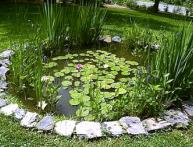DIY soil moisture sensor at home
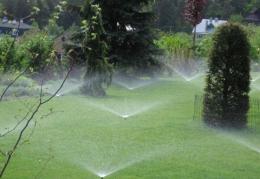
Designs in the country that work automatically can simplify the life of the owner. Automatic system glaze installed in order not to do monotonous hard work. To prevent an excess of water, it is worth installing a soil moisture sensor - it is not difficult to make such a structure with your own hands.
Content:
- What is a humidity sensor?
- Why is this device needed?
- What is needed to make a sensor with your own hands?
- Step-by-step manufacturing instructions
- Features of application
What is a humidity sensor?
The humidity sensor is a device that consists of two wires. They are connected to a weak energy source. If the humidity between the electrodes begins to increase, the resistance decreases and the current decreases. If there is little water, then resistance increases.
It is worth understanding that the electrodes will be in humid conditions. For this reason, experienced specialists advise turning on the device using a key. This will reduce the negative impact of corrosion. In another situation, the entire structure is turned off. It is turned on when it is necessary to check the humidity. To do this, just press a button.
Why is this device needed?
The installation of humidity sensors is carried out in greenhouses and in open ground. With their help, you can control the watering time, and a person will not have to do anything for this; it will be enough to turn on the device. After this it will work without interruption. But summer residents should monitor the condition of the electrodes, as they can deteriorate due to corrosion. Both in greenhouse conditions and in open ground, such a system will be an excellent assistant.
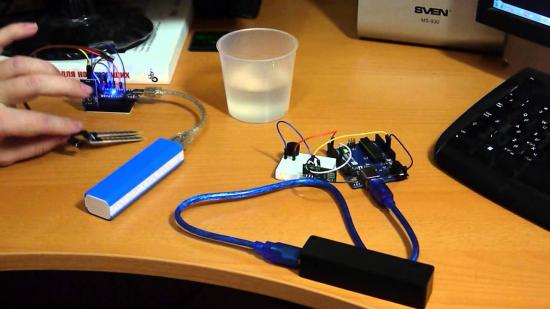
Such a system shows the result quite accurately when compared with other similar designs. Often a person already thinks that the soil is dry, although the device will show a hundred units of moisture. And after the soil has been watered, these indicators increase to 700 units.
If such a sensor will be used in open ground, then it is recommended that the upper part be sufficiently sealed. This will prevent the indicators from being distorted. This is accomplished by coating with a waterproof resin.
What is needed to make a sensor with your own hands?
In order to make a sensor yourself, you need to acquire the following tools:
- Two electrodes. In this case, their diameter should be about 3-4 mm.
- A base that was made of textolite or a material that is not susceptible to corrosion.
- Nuts and washers.
- Other support will also be needed tools.
Step-by-step manufacturing instructions
The sensor is assembled in the following sequence:
- Initially, the electrodes are attached to the base. The main thing is that it is protected from corrosion.
- After this, a thread is cut at the end of the electrodes. They are sharpened on the reverse side to make it easier to bury them in the ground.
- Holes are made in the PCB base. Next, the electrodes are screwed into them.To secure them, nuts and washers are used.
It is necessary to select the necessary wires that will fit the washers. After this, the electrodes are insulated. They go 5-10 centimeters into the ground. It depends on what container is used and the size of the bed. For the sensor to work, a current of 35 mA and a voltage of 5V are required. It depends on the moisture level.
Video about a simple humidity sensor:
Finally, the sensor is connected. For this, 3 wires are used that are connected to the microprocessor. A special controller will provide the opportunity to combine the device with a buzzer. After this, a signal is given if the soil moisture decreases too much. In some sensors, instead of a signal, the light changes.
Features of application
There are a variety of uses for the soil moisture sensor. They are often designed for automatic watering systems. Sensors are made in pots for flowers. They are useful for plants that are too sensitive to the level of moisture in the ground. If succulents are grown, then rather long electrodes are used. In this case, there will be a reaction to changes in humidity in the rhizome.
Often such sensors are used if violets or plants that have fragile roots are grown. If you install a sensor, then you can know when it is necessary to water. Such devices are ideal if plants are grown in greenhouse conditions. A similar sensor design method is also used if it is necessary to control air humidity. This is especially useful for those plants that are systematically sprayed.
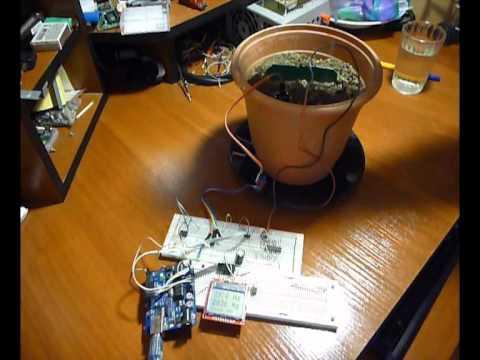
Garden owners can relax, since the sensor will decide for them when it is necessary to water the plants. In this way you can find out how moist the soil is. This will protect the beds from excess moisture. There are other cases where people install sensors. They can help monitor soil moisture in the basement. Some people install it in the sink area.
If a pipe starts to leak, the automatic design will immediately tell you about it.
In this way, timely repairs will be carried out. So, the soil moisture sensor makes it possible to create devices in various areas and zones of the dacha area in a couple of days. There is no need to run for professional help, since such a design is easy to do yourself. To do this, it is enough to comply with certain rules and consistency.

